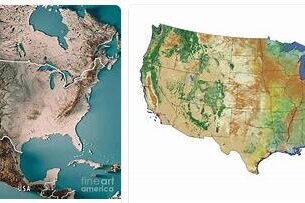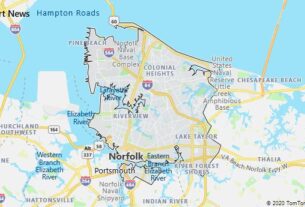Alaska is 1,717,854 km². The land mass of the state of Alaska is 1,481,347 km², making it one-fifth the size of the continental United States. Alaska has the fourth lowest population.
With its capital Juneau, the state is located in northwestern North America and borders on Canada.
On January 3, 1959, Alaska was incorporated as the 49th state of the United States. Alaska is nicknamed the “Last Frontier”. 17 of the 20 highest mountains in the US are in Alaska.
The most famous sights of Alaska are the Denali National Park with one of the highest mountains Mount McKinley and the Glacier Bay National Park.
UNESCO world heritage
Glacier Bay National Park and Preserve
Wrangell-St. Elias National Park and Preserve
National Parks in Alaska
Kenai Fjords National Park
Wrangell-St. Elias National Park & Preserve
Glacier Bay National Park & Preserve
Klondike Gold Rush National Park
Lake Clark National Park & Preserve
Sitka National Historic Park
Denali National Park & Preserve
Gates of the Arctic National Park & Preserve
Katmai National Park & Preserve
Western Arctic National Parklands
Yukon- Charley Rivers National Preserve
Cities and interesting places in Alaska
Juneau
Anchorage
Barrow
Fairbanks
Ketchikan
Kodiak
Denali National Park with one of the highest mountains Mount McKinley
Denali National Park and Preserve is located in the heart of the state of Alaska in the USA. The park is located on the George Parks Highway approximately 240 miles north of Anchorage and 120 miles south of Fairbanks. In the territory of the national park is Mount McKinley with a height of 6193 meters. Mount McKinley is the tallest mountain in North America. He gives Denali National Park its name, which is derived from the Indian word denali (high).
Consisting of six million acres of wild land, Alaska ‘s Denali National Park is home to a pristine wilderness of grizzly bears, moose, wolves, Dall sheep and caribou. Three ecosystems are found in the park: tundra, taiga and alps.
Unlike other national parks, no road network extends through Denali Park. A single 92-mile lonely park road runs right through the park.
Park Road is open from mid-May to mid-September. The first 15 km of the park road to the Savage River Bridge are paved and open to private vehicles, after which you can transfer to a shuttle bus, continue by bike, or walk. At the end of Park Road is Wonder Lake, which offers a good view of Mount McKinley.
On February 26, 1917, the national park was established as Mount McKinley National Park by President Woodrow Wilson to protect the Dall sheep from poachers.
On December 2, 1980, the park was renamed Denali National Park and expanded. These areas have a protected status of a National Preserve where hunting is permitted. In 1976 the area was declared an international biosphere reserve.
Seemingly untouched by man, Denali National Park amazes visitors with its natural beauty, size and abundance of wildlife. Popular activities in the park include guided hikes, wildlife viewing, mountaineering, rafting, and camping. Denali Park offers dog sledding, backcountry skiing, and snowmobiling in the winter.
Peak season at Denali National Park runs from mid-May to mid-September, but the park is open year-round. Due to the park’s location in the Antarctic Circle, there is up to 21 hours of sun during the summer solstice.
Climate & Weather in Denali National Park
The climate and weather in Denali Park is characterized by long, cold winters and short, warm summers. Due to its proximity to the Arctic Circle, it doesn’t get dark in Denali Park from late June to early July. In December, on the other hand, the light times are very short.
Directions & Getting There Denali National Park
Access to Denali National Park is via Alaska Highway 3 (George Parks Highway) about 240 miles north of Anchorage, 120 miles south of Fairbanks, and 12 miles south of Healy, or by air and rail.
The Park Road inside the national park leads to Kantishna.
Lodging & Overnight in Denali National Park
You can stay overnight in Denali Park in designated campsites to which you can drive the mobile home. Overnight stays in the wilderness are only allowed after being instructed by a park ranger. However, visitors should be aware that they are in bear country and behave accordingly.
No other accommodations are provided by the National Park Service. In the park there are only private companies on their own property, such as the Remote Wilderness Lodge in Kantishna. This is at the end of Park Road. Others include: Camp Denali/Denali North Face Lodge, the Kantishna Roadhouse, Denali Backcountry Lodge and Skyline Lodge.
On the edge of the park are private lodgings in the communities of Healy, about 11 miles north of the park entrance, and Cantwell, about 30 miles south of the park entrance.
There are other hotels and motels along the highway.
Entrance to Denali National Park
Admission at the Denali Park entrance is $10.00 per person (children 15 and under are free). This entrance fee allows the visitor a 7-day entry permit.
Denali Annual Park Entrance Pass
The annual pass is valid for 12 months from the month of purchase. The pass holder may bring up to three other adults into Denali National Park and Preserve. The Denali Annual Park Entrance Pass is $40.
You can purchase the pass at the Denali Visitor Center, the Murie Science & Learning Center and year-round at the Talkeetna Ranger Station.
America the Beautiful – National Parks and Federal Recreational Lands Pass
Beginning in 2007, the Golden Age Pass, Golden Eagle Pass, and Golden Access Passes were replaced by an inter-departmental America the Beautiful – National Parks and Federal Recreational Lands Pass. This pass is for the general public and provides access and use of federal recreational facilities.
Attraction address Denali National Park
Denali National Park
George Parks Hwy
Denali National Park and Preserve
AK, United States
//www.nps.gov/dena



